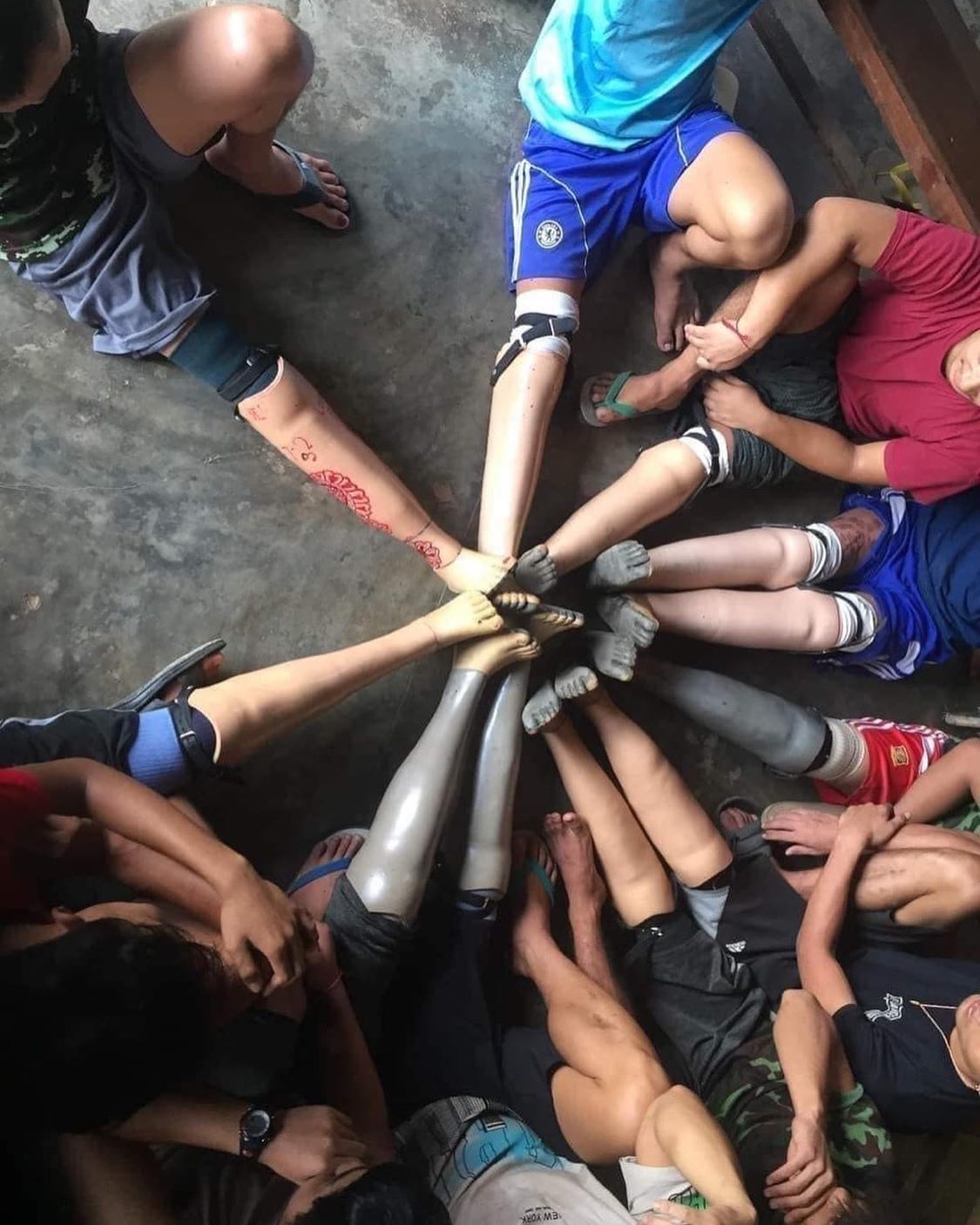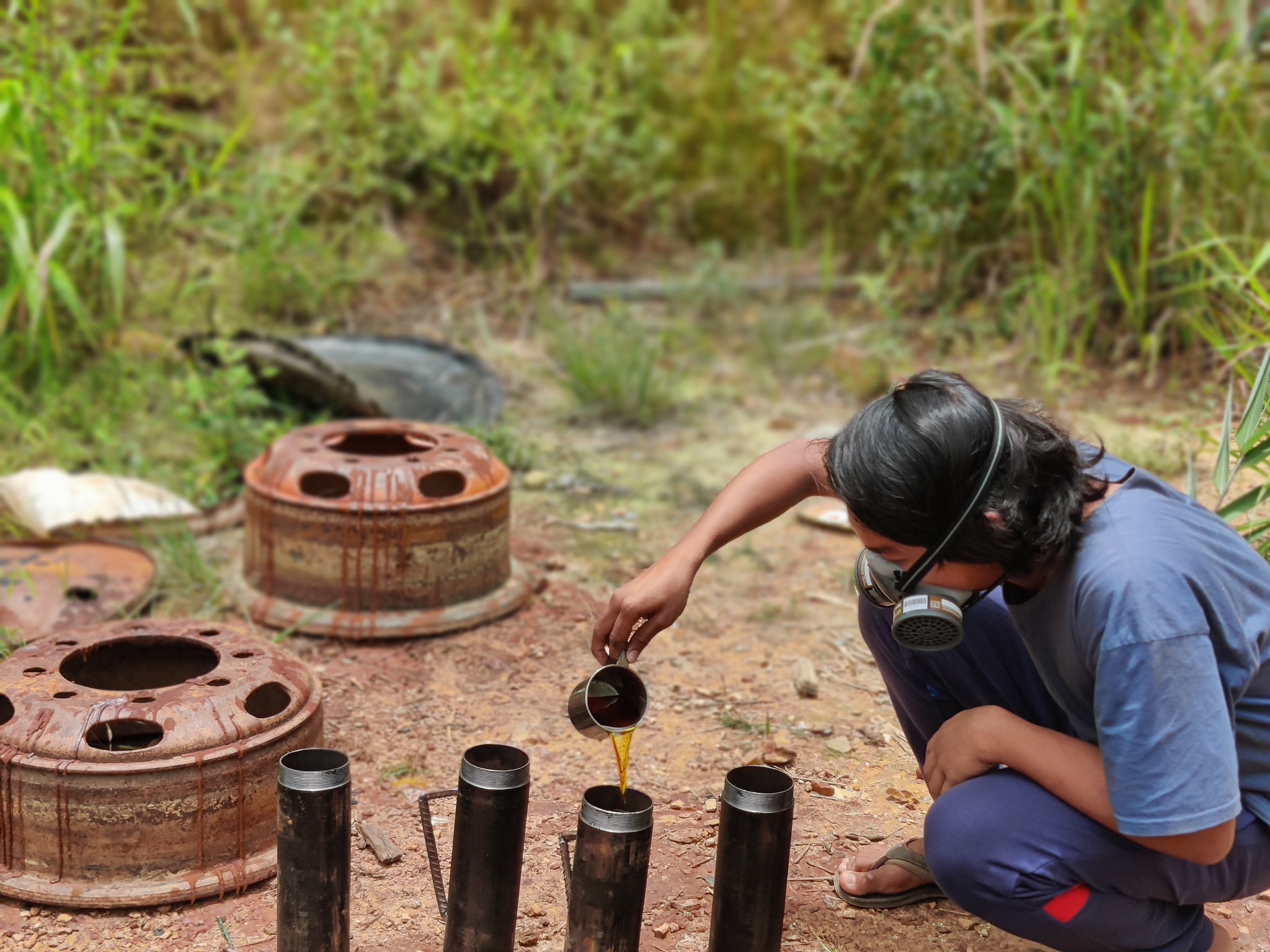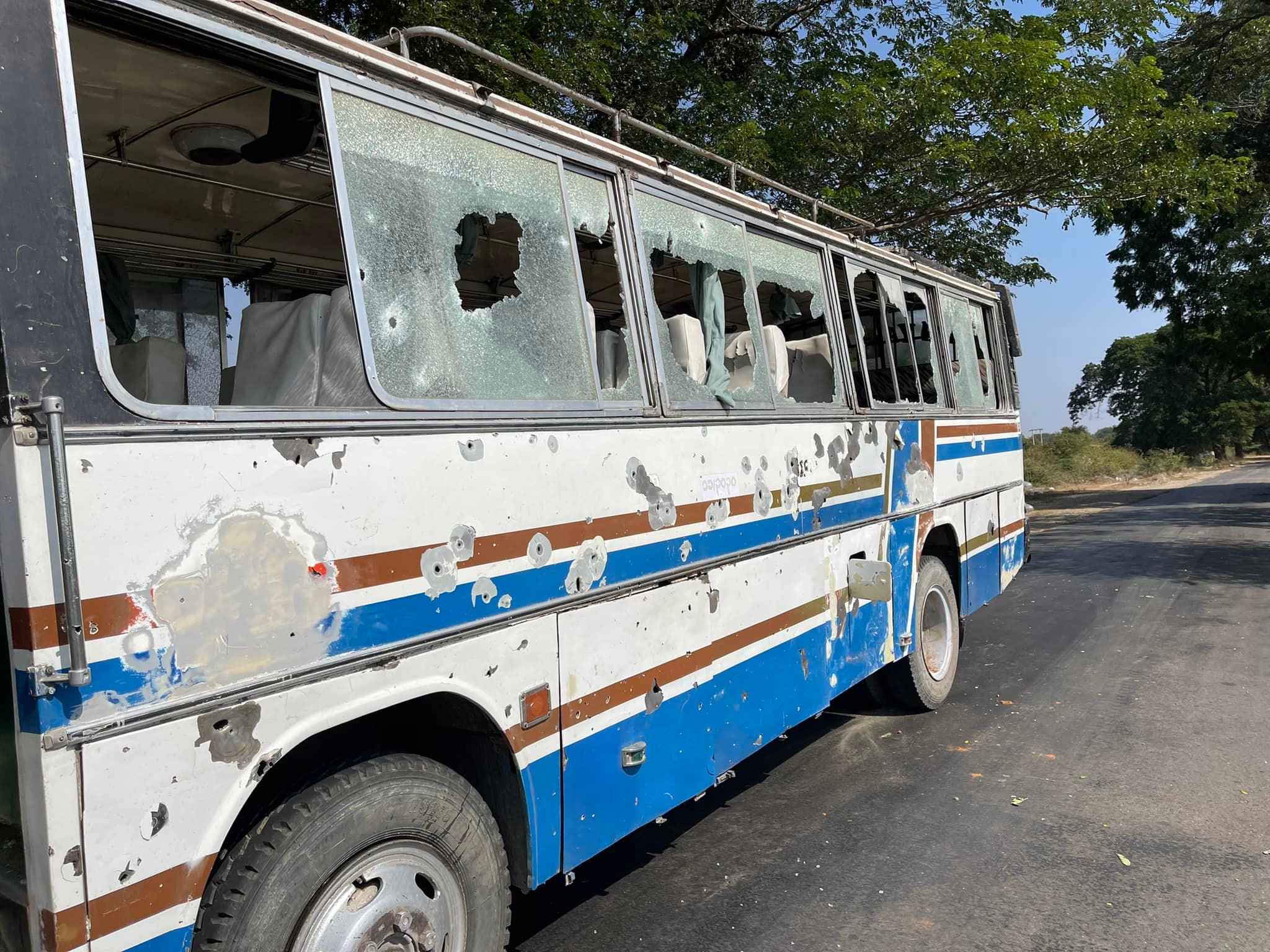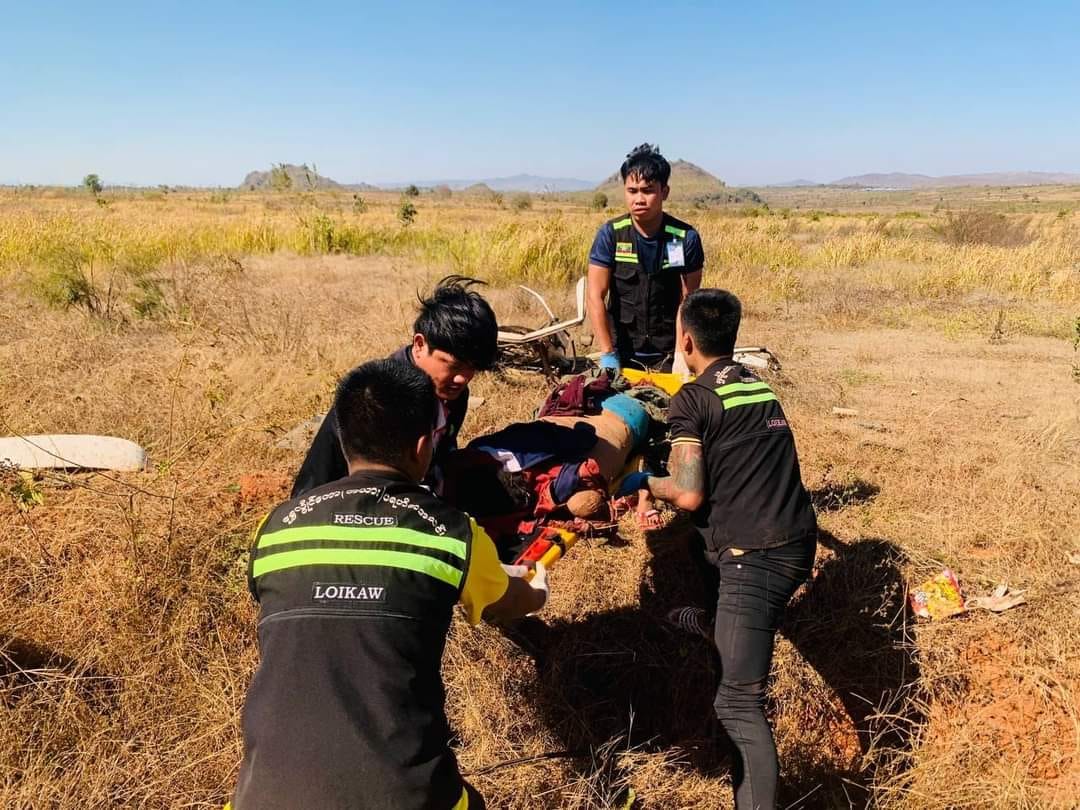The war zone has expanded in the two years since the putsch in Myanmar, and so have the number of minefields.
Both Myanmar military and resistance forces use mines to attack each other. And it is an important weapon for resistance forces, who are inferior to the Myanmar military in terms of weaponry.
While the land mine has become a key weapon, it is posing a great danger to civilians already suffering from the miseries of armed conflict.
Townships at risk from land mines
Of the 330 townships in Myanmar, 78 have reported land mine explosions since the coup. Those townships are in Sagaing, Bago, Mandalay, Tanintharyi and Magwe regions, and Kayah, Shan, Rakhine and Kachin states.
According to UNICEF, 241 people were killed and 670 injured by land mines from April 2021 to March 2023 in those areas.
In Sagaing, Magwe and Mandalay regions, land mines and unexploded ordnance (UXO) were once unheard of. There was no fighting in those areas before the coup. Clashes in these regions erupted and only intensified after people rose in rebellion against the Myanmar military for its coup and subsequent killings of peaceful protesters.
Land-mine risks have surged in Sagaing Region, an anti-junta stronghold where the regime is carrying out a scorched earth policy to contain the resistance movement.
The first cases of land-mine explosions in central Myanmar were reported in Sagaing in August 2021.
“Previously, we had only seen land mines in movies. But now, residents are warning each other to avoid traveling to places where clashes have occurred, and to use caution while traveling on inter-village roads and highways,” said Daw Aye May, a resident of Paungpyin Township in Sagaing Region.
In other townships where clashes are escalating, including Bamauk, Katha, Kawlin, Kantbalu, Pale, Htilin, Pauk and Myaing, local resistance forces notify the people of the land-mine risk in times of high military tension, said residents.
In Sagaing Region, the Kachin Independence Army, People’s Defense Force (PDF) battalions and local PDF units are all fighting the regime. All of them use land mines, planting them on routes near villages and on the edges of forests that junta troops are likely to use. Some resistance forces warn local residents not to go near minefields, informing them that villagers who cause a mine to explode or be damaged must compensate resistance forces for the cost.
Junta troops also use various kinds of land mines produced by their ordnance factories, and plant them in every village they raid. They also use the bodies of civilians they kill as booby traps, planting mines on them.
Land-mine victims

David, a resident of Pekon Township in southern Shan State, lost one of his legs in a land-mine blast in 2022. He accidentally stepped on the mine while fleeing fighting in the area. His son was killed in action the same year while serving in a PDF group based in Kayah State.
When interviewed, David declined to provide personal details about himself, and mentioned at least three times that he fears the regime. He has been emotionally unstable since last year, and his sister has to take care of him.
“I’ve lost my home and my livelihood. I am deeply depressed; sometimes I want to kill myself,” he said.
In many cases, civilians have been killed or injured by land mines while going to their farms or into forests. In some cases, children find explosive remnants of war, which explode when they play with them.
Resistance fighters have also been killed or injured while producing or clearing mines.
Ko Myo, who is second in charge of an improvised explosive device production workshop run by a PDF in Sagaing Region, said five members of his PDF have died and six have been injured in three explosions at the workshop.
“While resistance fighters on the front line are risking their lives, we production members also have to risk our lives. These improvised explosive devices are crucial for us to fight the regime. We are aware of the risk, but we have no other choice. We have to do this,” he said.
Resistance forces in Sagaing and Mandalay regions have officially reported at least 20 fatal explosions among their members while making or planting mines. The actual number of casualties could be higher, however.
Use of land mines in Myanmar

The International Campaign to Ban Land mines, a global civil society coalition of hundreds of organizations working for a world without antipersonnel mines, has advocated against the use of mines since 1992. It successfully pushed for the adoption of the Mine Ban Treaty, which bans the use, production, stockpiling and transfer of anti-personnel mines, in 1997. Since then, 164 countries have ratified or acceded to the treaty, but Myanmar is not among them.
According to Landmine Monitor’s country report, the Myanmar military-owned Myanmar Defense Products Industries, known as Ka Pa Sa, produces at least six types of antipersonnel land mine: MM1, MM2, MM3, MM4, MM5 and MM6. These mines are mainly used by its infantry and light infantry battalions.
The MM1 is modeled on the Chinese Type-59 stake-mounted fragmentation mine; the MM2 is similar to the Chinese Type-58 blast mine; the MM3 is a bounding mine; the MM4 is an anti-vehicle mine; the MM5 is a Claymore-type directional fragmentation mine; and the MM6 is a copy of the United States’ M14 low metal content antipersonnel mine.

The mines produced by the Myanmar military are better in quality and more explosive than the mines used by resistance forces.
Resistance forces get mines in five ways: from ethnic armed organizations that have ordnance factories; from arms dealers; producing them by themselves; seizing them from junta troops during fighting; and digging up and reusing mines planted by junta troops.
Among the ethnic armed organizations (EAOs), the Kachin Independence Army, the Karen National Liberation Army, and the Myanmar National Democratic Alliance Army are fighting the regime and have their own ordnance factories. They supply mines and technologies to resistance groups.
Other EAOs such as the United Wa State Army, Ta’ang National Liberation Army (TNLA), Shan State Progress Party (SSPP) and Arakan Army are not currently fighting the regime, but are involved in providing military training and selling or giving weapons and ammunition, including land mines, to resistance forces.
The Restoration Council of Shan State also uses land mines in fighting against the SSPP and TNLA.
A problem that was never solved

“From a military point-of-view, a mine is a very handy weapon, it fills a role no other weapon can. A Khmer Rouge general called it the perfect soldier: ever courageous, never sleeps and never misses,” said Paul Jefferson, a bomb disposal expert formerly in the British Royal Engineers Corps.
Once activated, a land mine remains dangerous for at least 50 years after it is planted. Armed organizations involved in Myanmar’s civil war have used land mines from the time Myanmar gained independence in 1948 till today.
Land mines planted in Karen, Shan and Kachin states, the sites of Myanmar’s first armed revolution, have yet to be cleared. As the resistance movement spreads across the country today, the area at risk from land mines is only expanding.
While some improvised explosive devices triggered by battery can be dead within six to 12 months, mines that are properly built and activated can remain dangerous for some 50 years.
Unexploded mines therefore continue to pose a threat to civilians long after a conflict ends. Armed organizations involved in the fighting are responsible for clearing the activated mines, and have a duty not to excessively use land mines, in consideration of civilians.

















